an excerpt fromHollywood Stories:
Celebrities, Movie Stars, Gossip, Directors,
Famous People, History and more!by Stephen Schochet
Copyright © 2013 by Stephen Schochet and published here with his permission
The Universal Maniac
In 1999, an Australian gentleman told me about an interesting experience he and his family had at Universal Studios. They were on the backlot tour passing one of the theme park’s main attractions, the Bates Motel used in the 1960 horror classic Psycho, about a murderous young man named Norman Bates who loved his mother a little too much. As the guide gave out information about how director Alfred Hitchcock shot the picture, a tall man, dressed in drag and carrying a large knife, emerged from behind the old set and charged toward the tram. The narrator seemed to know nothing about the Norman Bates look-alike and clammed up completely. The make-believe killer wore such a convincing maniacal expression that some of the paying customers were frightened and screamed when he raised his weapon. Then the “fiend” pulled off his wig and he turned out to be comic Jim Carrey; The thirty-seven-year-old star was clowning around during a work break. After his laughing “victims” calmed down, Jim was happy to pose for pictures and sign autographs.
Extra: Jim Carrey’s second wife, actress Lauren Holley, once complained that her husband freaked her out because he couldn’t pass a mirror in their mansion without stopping, staring into it and making funny expressions for at least fifteen minutes. The same face-changing habit helped the Canadian-born comedian earn the praise of directors, adoration from his fans and millions of dollars.
Extra: Jim Carrey’s big break came in 1982 when fifty-two-year-old Mitzi Shore, the owner of the famed Comedy Store on the Sunset Strip, took a mother-like interest in his career. Three years earlier, Shore’s world was rocked when her unpaid performers went on strike. After all, if the waiters and the bartenders got wages, why not the talent? Why should Shore get rich while they made nothing? In Mitzi’s eyes, she gave comics a showcase to hone their acts and move on to bigger venues. She even provided some of them with free food and housing. How could they do this to her? It had been especially galling that thirty-two-year-old David Letterman, one of her favorites, had joined the work stoppers. When a car struck a disgruntled picketer who ended up in the hospital, Mitzi decided to settle up before someone got seriously hurt. (It turned out the “victim,” David Letterman’s three-years-younger friend and future late-night TV rival Jay Leno, faked his injuries in a successful attempt to end the conflict.) The whole ugly incident left a bitter taste in Shore’s mouth; she banned several of the labor dispute’s instigators from the club.
When Carrey arrived on the scene, Mitzi thought the newcomer was someone special. He had an elastic body that seemed to be made of Silly Putty, was respectful and (unlike many of the other comics who the proprietor saw) looked good and always wore suits. Out of hundreds of comedians who auditioned at the Comedy Store each week, Shore gave Jim prime opportunities to perform nights at her club, publicly gushed over him and important people in Hollywood took notice.
Extra: A knife-wielding “Norman Bates” charging the tram later became a feature on some of the Universal Studios’ Tours.
The Lazy Super Dad
Marlon Brando wanted to work as little as possible when he played Jor-El, the Kryptonian father, in the 1978 movie Superman. The fifty-three-year-old actor told the film’s producers that he only needed to do a voiceover and some object could stand in his place. After all, he would be part of an alien race; nobody knew what they looked like. Perhaps the extraterrestrial could appear as a green bagel. His bosses were both bemused and alarmed. They pointed out that Marlon’s son would look human and be played by an earthling. A grinning Brando agreed to show up on the set. For his ten minutes of screen time, the star made an estimated nineteen million dollars while not bothering to learn his lines. In his most dramatic scene, Marlon held his baby above his head, speculated on the child’s future, and then placed him on the space ship to escape the doomed planet. Brando hadn’t bothered to learn his lines; his dialogue was penned on the bottom of the super infant’s diaper.
Extra: The first Superman movies were low-budget serials made in 1948 starring Kirk Alyn (1910-1999) in the title role. The cheaply made Saturday Matinee cliffhangers got surprisingly good reviews. Alyn was only given credit for playing Clark Kent; the studio claimed that no actor was qualified to play the Last Son of Krypton so he’d appear as himself. One scene required the Man of Steel to rescue two would-be victims from a burning building. After the first take the director said, “That was great, Kirk. But could we do it again without you straining so much? I mean, you’re super strong, lifting a couple of humans should be easy.”
Alyn, a body builder in real life, was indignant. “What do you expect? These people are heavy!”
“People? Oh my goodness, baby, I’m sorry, we forgot to get you the dummies!”
Extra: In 1973, Marlon Brando (1924-2004) starred in the controversial and sex-charged drama Last Tango in Paris. This time around, the actor wrote some of his unmemorized lines on the bottom of his shoe, and in a few scenes hopped around awkwardly on one foot in order to read them.
Extra: Thirty-nine-year-old Jack Nicholson looked forward to working with the great Brando when they co-starred in the 1976 western, The Missouri Breaks. But Marlon, who eventually became Jack’s next-door neighbor in the Hollywood Hills, disappointed Nicholson by reading cue cards, thus not making eye contact in their shared scenes. Later Brando hired an assistant to read the dialogue out loud into a radio transmitter from Marlon’s trailer, which the actor could then hear through an earpiece. Once, Brando was about to speak his lines when the device inadvertently picked up a police broadcast. The confused performer came out of character. “Oh my God! There’s been a robbery at Woolworths.”
The Wildest Guest
Longtime staff at the old Ambassador Hotel in Los Angeles had many candidates for the most outrageously behaved celebrity guest. There were the hammy Barrymore brothers who always tried to outdo one another; After the drunken John earned many stares for bringing his pet monkey in the hotel’s famed Moroccan-style club, the Coconut Grove, Lionel arrived there with seven chimps. Chaos erupted when the well-dressed guests chased the animals as they swung through the paper Mache trees. Then there was famed movie theater owner Sid Grauman who told Charlie Chaplin that he found a dead body in his hotel bed. The tramp fled in terror when Sid pulled back the blankets, not realizing he was looking at a wax dummy covered in ketchup. But it was hard to top the antics of actress Tallulah Bankhead who once called for room service, answered the door in the buff and told the bellboy no tip; She had nothing on her.
Marlene’s Wartime Regret
Marlene Dietrich found her true calling entertaining the Allied troops in 1943. The forty-two-year-old actress, who never enjoyed making movies, got a crash course in how to talk to audiences. Nothing could be tougher or more fulfilling than performing in front of young men who might die in battle the next day. The Berlin-born American citizen overcame suspicions that she was actually an Axis spy, and was proud of spurning Hitler’s request to return to Germany. After World War II ended, she enjoyed being a lusty cabaret singer for many years and tried never to take herself too seriously. Marlene, whose long list of romances ranged from John Wayne to General Patton, once mentioned to her husband that she should have married Hitler back in the thirties, and then there would have been no war. She laughed when he agreed and stated that the Fuhrer would have killed himself much sooner.
Extra: In 1923, actress and singer Marlene Dietrich (1901-1992) married casting director Rudolph Sieber (1897-1976). They lived together for five years, had one daughter and never divorced. Rudolph took a mistress, while Marlene embarked on several notorious affairs. Dietrich stayed friends with the Roman Catholic Sieber till his death, and referred to him as the perfect husband.
Amadeus Was Here
New York actor F. Murray Abraham didn’t mind spending months in Prague
When he starred in the 1984 Mozart fantasy Amadeus. In the Communist controlled city, you could turn the camera 360 degrees and it still looked like the eighteenth century. So what if there were a few inconveniences? One night a friend of Abraham’s, who was staying in the same building, was consumed with searching the actor’s apartment for electronic listening devices. F. Murray, who would win an Oscar for his performance as Mozart’s obsessed rival Salieri, couldn’t care less if the secret police heard them, and just wanted to go to dinner. But when his buddy found a mysterious plate under a decorative rug, he exclaimed to Abraham, “I told you, man!” and attempted to disable the suspected bug by triumphantly wielding a butter knife to undo the screws. When they suddenly heard the loud crash of a chandelier hitting the floor of the room beneath them, the two shocked men then beat a hasty retreat to the nearest restaurant.
Who Cares if it isn’t Real?
The lavish 1984 production of Amadeus angered some classical music scholars with its portrayal of Wolfgang Mozart. The film’s depiction of the former child prodigy as a foul-mouthed juvenile was a stretch; in reality, Mozart enjoyed toilet humor but was too well bred to act that way in front of royalty. And his supposed rival Salieri was a talented composer, not the jealous mediocrity displayed onscreen. There was no evidence to prove that he plotted Mozart’s demise. In 1791, the final year of his short thirty-five-year life, Wolfgang was hired to write a death requiem (not as shown in the movie by Salieri, but instead by a Viennese Count that passed off others’ work as his own). Some who defended the picture pointed out since it was narrated by a madman in an insane asylum, dramatic license was allowed. Amadeus won eight Oscars including Best Picture, and proved that historical accuracy was not necessary to achieve great cinema.
Extra: Shortly after Antonio Salieri (1750-1825) died, a rumor spread through Austria that the Italian composer had admitted to the murder of Wolfgang Amadeus Mozart (1756-1791). The most widely accepted theory of Mozart’s demise was rheumatic fever, and no foul play was suspected at the time. The negative portrayal had begun during Wolfgang’s life when the Mozart family occasionally accused Salieri of using his influence with the Royal Court to stop Mozart from obtaining important posts. There was more evidence that Antonio admired Wolfgang and tried to help him. When Salieri was appointed Kapellmeister, or head music maker, in 1788, he revived Mozart’s The Marriage of Figaro (1784). The comic opera, which had originally been banned in Vienna because it made fun of the aristocracy, went on to become one of the always-struggling-for-money Wolfgang’s most famous works. Salieri’s attending doctors and nurses later claimed that Antonio’s deathbed confession never happened. Yet the gossip about enmity between the two men persisted for centuries, and inspired fifty-three-year-old Peter Schaffer to write the play Amadeus in 1979.
The Three Stooges’ Pain
In the early 1930s, when Moe Howard of The Three Stooges decided childlike violence would be their trademark, it caused decades of repercussions for both the comics and their followers. After appearing in some two hundred films, middle Stooge Larry Fine lost all feeling on one side of his face. Curly Howard, the junior member of the team, wore a disguise in public to avoid being kicked in the shins by fans. Shemp Howard, who left the act and came back after younger brother Curly suffered a stroke in 1946, almost got knocked out by a young actress that he criticized after several takes for being too ladylike with her punches. Moe led his partners through orchestrated mayhem aimed at adult movie audiences for twenty-five years. He never imagined that beginning in the late fifties, the Stooges shorts would constantly replay on TV in front of impressionable kids. A sentimental family man in real life, Moe traveled throughout the country to teach youngsters the techniques of harmless, two fingers-to-the-forehead eye poking.
Extra: One evening in the late 1920s, Shemp Howard (1895-1955) accused Larry Fine (1902-1975) of cheating at cards and poked him in the eyes. As Larry rolled on the floor writhing in pain, and Shemp apologized, Moe Howard (1897-1975) held onto his sides laughing. The eventual leader of The Three Stooges thought the incident was the funniest thing he’d ever seen, and incorporated similar violence into their act.
Extra: By the late 1930s, Jerome “Curly” Howard (1903-1952) had become the most popular Stooge. A skilled basketball player and ballroom dancer, Jerry’s athleticism came in handy for his energetic antics on the big screen. Unlike Moe, who learned his scripts to the letter, the childlike Curly was a spontaneous performer. One time during filming, the youngest Howard brother suddenly got down on the floor and spun like a top for a few minutes until he remembered his lines.
Walt Disney’s Daughters
Walt Disney’s two daughters, Sharon and Diane, grew up sheltered from the limelight. The children had no images of Mickey Mouse around their home. Their father didn’t go to many parties, preferring to stay in after a long day of work. Sometimes he would playfully chase the youngsters upstairs, cackling like the evil peddler woman in Snow White. When they behaved badly, Walt would admonish them with a raised eyebrow; His stern demeanor inspired the character of the wise old owl; in the 1942 animated feature Bambi. As toddlers, the brainy Diane and beautiful Sharon stayed blissfully unaware that their parents worried about them being kidnapped and allowed no pictures of the sisters to be publicly circulated. Once in 1939, a curious classmate questioned six-year-old Diane about her family. She went home and said, “Daddy, you never told me you were that Walt Disney,” and asked him for an autograph.
Extra: Disney came up with Mickey Mouse in 1927 to replace Oswald the Lucky Rabbit, one of Walt’s earlier characters, which he hadn’t copyrighted and lost to Universal Studios. The young filmmaker made sure that from then on, he owned everything he created. Some on Disney’s staff thought that he was like an overprotective father when it came to his favorite rodent. Never one to hold grudges, Walt had given Woody Woodpecker artist Walter Lantz (1899-1994) his blessing to draw the Oswald shorts, but it still killed Disney to see the cartoon bunny at another studio. In 2006, forty years after Walt passed on, Universal now merged with NBC, began showing NFL football on Sunday nights. To obtain the services of sixty-two-year-old broadcaster Al Michaels, still under contract to Disney-owned ABC, Universal transferred ownership of the Lucky Rabbit back to its original company. The trade thrilled Walt’s seventy-three-year-old daughter Diane to no end.
Goldwyn’s Conclusion
After a bad preview for the 1947 Christmas film The Bishop’s Wife, producer Sam Goldwyn hired writers Billy Wilder and Charles Brackett to fix it up. The movie, about an angel who rescues the marriage of a neglectful man of the cloth, had left Goldwyn feeling frustrated by his actors. Cary Grant was giving a lackluster performance as the spirit, leading lady Loretta Young was complaining about her dowdy costumes and David Niven, playing the bishop, wanted Grant’s role. Over one weekend, the two script doctors worked their magic and saved the picture. Due to potential tax problems, the two scribes decided not to accept any payment for their work. At a lunch meeting with the grateful Goldwyn, Wilder and Brackett told him that they had come to the conclusion there should be no fee. “That’s amazing!” said the smiling mogul. “I have come to the same conclusion.”
Who Won the Race?
Writer/director Billy Wilder liked to mess with producer Samuel Goldwyn’s head. The Austrian-born Wilder, who had fled Europe when Hitler rose to power, respected how the former glove salesman from Poland had good taste in stories, even though Sam hardly ever read anything. One time Wilder pitched the mogul a screen idea about Nijinsky, the famous Russian ballet dancer. Goldwyn was dubious, Wilder persisted; the story had great cinematic possibilities. As a young man, Nijinsky danced for the Bolshoi and received international acclaim. Then he met the great love of his life, was rejected, ended up in an insane asylum and thought he was a horse. Goldwyn stared daggers at him. Sam didn’t just fall off the turnip truck. The public would never pay to see something so negative.
“Don’t worry, Sam, it has a happy ending.”
Goldwyn asked what could possibly be happy about a man who believes he’s
a horse.
“He wins the Kentucky Derby!”
Bette’s Resentment
Thirty-year-old Bette Davis deeply resented William Wyler when he directed her in the 1938 drama Jezebel. The New England-born Davis relished the challenge of playing a duplicitous Southern belle in the 1850s. But why did the older-by-six-years Wyler humiliate her in front of the crew, demanding that she do constant retakes? Didn’t this arrogant man realize she was now a big enough star to have him fired? When Davis complained that the filmmaker never complimented her work, he sarcastically kept saying her acting was marvelous until she begged him to stop. Despite coming down with bronchitis and throwing several hysterical fits on the set, Bette won the Oscar for Jezebel, which she said was the proudest moment of her career. She praised Wyler for getting a great performance out of her, and later acknowledged what everyone at the studio already knew; Throughout the production, she and Willy had engaged in a torrid love affair.
Extra: Bette Davis (1908-1989) met her fourth and final husband Gary Merrill (1915-1990) on the set of All About Eve (1950). She would later say that he was a tough guy, but none of her spouses were macho enough to be Mr. Bette Davis. When they divorced in 1960, a tearful Davis told a judge that the couple had gotten into a fight while driving through Connecticut. Merrill had stopped the car, picked her up and thrown her out. She had landed face first in a snowdrift. “I might be there still, if I hadn’t been rescued by a local farmer.” Merrill stood up and said angrily, “Your honor, you’re not going to believe this malarkey, are you? I never threw Bette out of the car in Connecticut. It was
Vermont where I threw her out!”
Shortly afterward, a much calmer Bette stood out on the courthouse steps, brandishing a long cigarette holder as she spoke with the press. She was asked if she’d ever marry again. “Well, gentlemen, it’s tough with my career and all, but never say never. I do however have three conditions.” She took a puff from her cigarette. “First he must have at least fifteen million dollars. Second, he must immediately sign half of it over to me. And finally,” she paused for dramatic effect, “he must promise to be dead within the year!”
Her criteria were never met.
Shatner Aged Well
William Shatner resisted producer Harve Bennett’s pleas that he let go of his leading-man image for the 1982 science fiction film Star Trek II: The Wrath of Khan. The fifty-one-year-old actor was full of ideas that Bennett found objectionable. In the scene involving the death of Mr. Spock, played by Leonard Nimoy, Shatner proposed that the extraterrestrial first officer should not be seen on camera; They should just show Bill as Admiral Kirk reacting to the loss. And why did the story have to focus on the aging former starship captain having a grown-up son? Bennett pointed out that some great film actors got older on screen. Who? “Well, uh, Spencer Tracy. You remind me of him.” Shatner smiled, backed off his demands and gave a mostly fine, understated performance. Later, Bennett found out that he lucked out with his answer; Shatner had worked alongside the aging Spencer Tracy in the 1961 ensemble courtroom drama Judgment at Nuremberg, and totally idolized him.
Extra: Thirty-seven-year-old director Nicholas Mayer used different methods to guide both his hero and villain through the 1982 movie Star Trek II: The Wrath of Khan. Ricardo Montalbán (1920-2009), who played the genetically engineered super-bad guy Khan Noonien Singh, had initially been over the top when he delivered his dialogue. The nervous Mayer suggested to the twenty-five-years-older Ricardo that he’d tone it down; Khan was a madman, but many crazy people were soft-spoken and that made them even more dangerous. To his relief, Montalbán, who at the time was a huge TV star on Fantasy Island (1978-1984), was grateful for the input. The veteran actor displayed no ego and did exactly what his younger instructor asked of him. With William Shatner in the role of Khan’s sworn enemy Admiral James Kirk, Mayer’s approach was to let his leading man do several bombastic takes until he got tired and bored. Then finally Shatner would give the low key line reading that ended up in the finished film.
Vincent Price was of Two Minds
Actor Vincent Price was of two minds regarding his career in horror films. The Saint Louis-born Price, who was both a gourmet cook and art collector, always felt a bit embarrassed when he made low-budget chillers. On the other hand, appearing in creature features helped older stars stay popular with young audiences. Besides, they were a kick to make; Vincent enjoyed the creepy jobs much more than those stodgy Biblical epics where everyone was always on their best behavior. While working on the 1958 low-budget thriller The Fly, the forty-seven-year-old Price kept breaking into laughter and ruining takes when he looked at the cheap-looking human/insect. Vincent continued to make mischief after the movie was completed. One day two female teens enjoyed a matinee screening of The Fly. They screamed loudest at the end when a familiar face they had just watched on screen stuck his head in between theirs and asked, “So how did you like the show?”
Extra: Always in search of extra publicity, Vincent Price (1911-1993) once took the place of his own dummy likeness at the Hollywood Wax Museum. The horror star stood motionless, held a hypodermic syringe, waited patiently for unsuspecting people to walk by and then reached out and squirted them with water.
Who Cares About Double Indemnity?
Barbara Stanwyck was unique among egotistical Hollywood actors in that she cared about the whole movie, not just her own part. In 1944, director Billy Wilder challenged Barbara to play against type in the crime-thriller Double Indemnity. She shone as a seductive villainess who convinced Fred MacMurray’s insurance salesman character to help murder her husband. When the film was completed, the two stars watched the final cut at Paramount Studios. Both had been worried that playing nasty characters hurt their images, but after the screening, they were giddy. Stanwyck, who would receive an Oscar nomination for her performance, remarked that the movie was wonderful. What did MacMurray think? “Oh, I don’t know how the movie is, but I’m great!”
Extra: In 1925, a housewife in Queens named Ruth Snyder convinced her husband to sign a huge life insurance policy. Then she teamed with her lover, a corset salesman named Judd Grey, to murder her spouse. They made several botched attempts before finally succeeding. After they were caught, the killer couple blamed each other; The jury believed both of them, which led to Snyder and Grey being sentenced to the electric chair. Their crime inspired author James Cain (1892-1977) to write the serial novel Double Indemnity in 1943, which a year later was turned into the classic film.
Extra: Barbara Stanwyck’s (1907-1990) mother died when she was two; her father abandoned her two years later. Her rough upbringing didn’t stop Barbara from having a hugely successful sixty-year acting career in movies, stage and television. The twice-divorced Brooklynite was loved for her kindness and respected for her demanding professionalism. Best known to later audiences for playing the tough matriarch, Victoria Barkley, on the 1965 TV western, The Big Valley, Barbara once had some advice for her co-star Linda Evans. “You need more presence.” The beautiful twenty-three-year-old Evans, who had leaned on the thirty-one-years-older Stanwyck emotionally since her real mother died, asked what she meant. “I’ll show you.”
Linda was about to do a scene where her character, Audra Barkley, walked through a door. Right before the cameras rolled, Barbara kicked her small screen daughter in the rear; Evans came flying onto the set with a startled, wide-eyed expression.
“Now that’s presence,” said the smiling Barbara after the director yelled cut.
The two women remained close friends for the rest of Stanwyck’s life.
The Kirk Spock Feud
William Shatner and Leonard Nimoy did not always get along when they played Captain Kirk and Mister Spock in the 1966 TV series Star Trek. Producer Gene Roddenberry was continuously lobbied by Shatner to make Kirk equal to the Vulcan scientist as a problem solver, resulting in extra dialogue for the Captain. Nimoy responded by stealing scenes with his reactions. He would lift an eyebrow, give his superior officer a quizzical look and offer one-word replies such as, “Fascinating.” At one point, the two actors cornered Roddenberry and demanded to know who the star was. Frustrated by their pettiness, Gene instructed the show’s writers to make Spock and Kirk buddies, which helped ease the tension. Always linked together in the public’s mind, Shatner and Nimoy enjoyed a long fruitful relationship and made lots of extra cash by parodying their feud.
Extra: Star Trek creator Gene Roddenberry (1921-1991) served as a Los Angeles Police Sergeant under Chief William Parker (1902-1966). Parker had taken over what was perceived to be a very corrupt force in 1950 and restored public confidence. William instructed his underlings to cooperate with the makers of the TV program Dragnet (1951-1959). Based on factual cases, the show put the hard-working Los Angeles officers in a heroic light. Parker also assigned his men the use of more patrol cars. He reasoned that not walking a beat would expose the troops to less temptation. It was William Parker who coined the phrase, “Thin Blue Line,” meaning only that law enforcement stood in between civilization and anarchy. Respect for the LAPD greatly improved due to William’s leadership, but some critics pointed out that there were incidents of police brutality under his watch. The taciturn head cop lamented that as long he was only able to hire human beings, there would be problems. Ten years after Sergeant Roddenberry left the force in 1956, the writer partially modeled the very logical, half-alien Mr. Spock on his quiet, efficient former boss.
Extra: In the 1934 comic mystery The Thin Man, William Powell (1892-1984) and Myrna Loy (1905-1993) starred as Nick and Nora Charles. The sophisticated couple delivered witty banter and drank heavily while catching killers. The retired detective and wife formula was hugely successful and led to five sequels. Audiences didn’t mind that “The Thin Man” was actually the lead suspect in the first movie and not Nick. The two actors got along well, but Powell occasionally complained that the scripts favored Loy. The leading man was often required to recite long pieces of dialogue that explained the case. His onscreen wife stood eying him with a quizzical expression, as she stroked their pet terrier. Then Myrna would steal the scenes with one-word replies like, “Really!” Some who observed the Kirk Spock byplay on the Star Trek set thought that William Shatner could identify with Powell’s plight.
Extra: Thirty-five-old William Shatner was told that he was going to be the star of Star Trek TV series (1966-1969), but the fans had other ideas. Leonard Nimoy as Mr. Spock, a character who the network originally wanted eliminated from the show due to his devil-like appearance, got more viewer mail. One day Shatner arrived in the make-up room to find a Life Magazine photographer there to record the application of Nimoy’s ears. Shatner, who wanted no one outside the Star Trek family to see his cosmetic secrets, announced from then on his own make-up would be done in his trailer and left. The fictional captain’s feelings were quickly made known; Shortly afterward, someone from the front office ordered the picture taker to leave. A furious Nimoy confronted a very defensive Shatner in what was the first of several arguments between the two of them.
Extra: When Gene Roddenberry was asked by his two main actors who was the star of the show, he chose Shatner. One of the reasons may have been that the producer resented Nimoy’s demands for a raise at a time when Star Trek, a very expensive TV program to produce, was losing money.
Extra: Immediately after Star Trek was canceled in 1969, Leonard Nimoy was a hot commodity. He joined the cast of the TV espionage show Mission Impossible (1966-1973) and made a fortune in real estate. Meanwhile, broke, divorced and unemployed, the Canadian-born William Shatner ended up living in a mobile home with his Doberman.
Verbal Shoot Out at Harvard Square
At high noon on a cold November day in 1974, sixty-seven-year-old John Wayne faced off with the staff of the Harvard Lampoon on the famous campus in Cambridge, Massachusetts. The students had issued their challenge by calling the beloved American icon a fraud. Wayne, who had his new movie McQ to promote, responded by saying he would be happy to show his film in the pseudo-intellectual swamps of Harvard Square. After the screening, without writers, the former USC footballer delivered a classic performance. When one smart young man asked where he got his phony toupee, Wayne insisted the hair was real. It was not his, but it was real. The appreciative underclassmen loved him and after the Q and A session, they all sat down to dinner. Later Wayne, who was suffering greatly from both gout and the after effects of lung cancer (sadly the Duke only had five years to live), said that day at Harvard was the best time he ever had.
… Continued…
Download the entire book now to continue reading on Kindle!
Special Kindle Price: $2.99!
(reduced from $9.99 for limited time only)

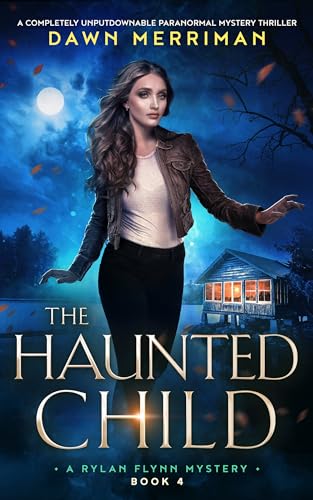

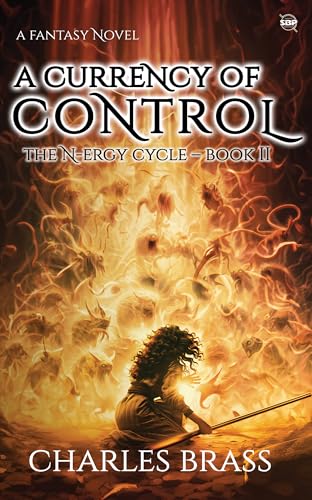





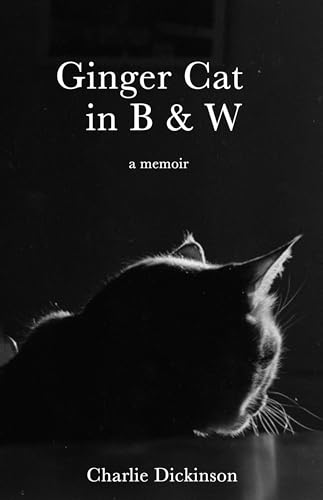
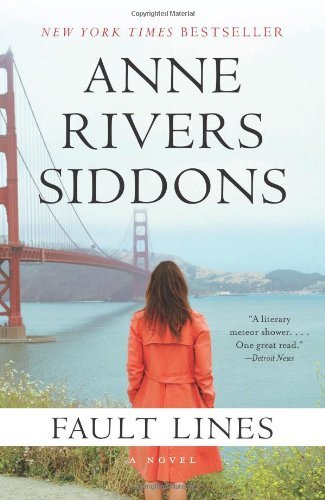
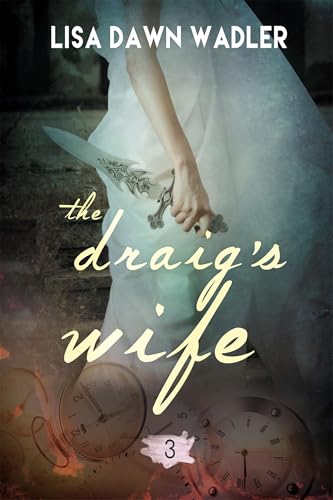











 A professional tour guide in Hollywood, Stephen Schochet has researched and told thousands of entertaining anecdotes for over twenty years. He is also the author and narrator of two audiobooks Tales of Hollywood and Fascinating Walt Disney. Tim Sika, host of the radio show Celluloid Dreams on KSJS in San Jose has called Stephen," The best storyteller about Hollywood we have ever heard." For more information about Hollywood Stories, or to schedule an interview, please contact Stephen Schochet at (310) 876-1400 or go to www.hollywoodstories.com
A professional tour guide in Hollywood, Stephen Schochet has researched and told thousands of entertaining anecdotes for over twenty years. He is also the author and narrator of two audiobooks Tales of Hollywood and Fascinating Walt Disney. Tim Sika, host of the radio show Celluloid Dreams on KSJS in San Jose has called Stephen," The best storyteller about Hollywood we have ever heard." For more information about Hollywood Stories, or to schedule an interview, please contact Stephen Schochet at (310) 876-1400 or go to www.hollywoodstories.com









